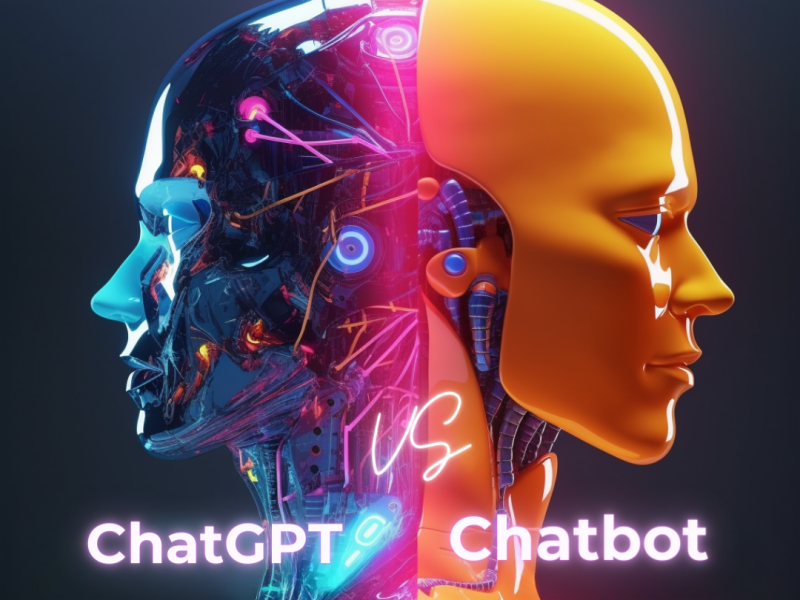Introduction to Chatbots
Chatbots have become an integral part of the digital landscape, transforming the way businesses interact with customers. Initially designed to mimic human conversation through text or auditory methods, they serve a multitude of purposes, from providing 24/7 customer support to facilitating transactions and offering personalized recommendations. Early chatbots were simple, rule-based systems that could only respond to specific commands or keywords. However, the evolution of artificial intelligence and machine learning has led to the development of more advanced chatbots capable of understanding natural language and learning from interactions. These sophisticated systems are reshaping industries by offering scalable, cost-effective solutions for customer engagement and are becoming increasingly indistinguishable from human operators in their ability to understand and respond to complex queries.
What is ChatGPT?
ChatGPT is a cutting-edge language processing AI developed by OpenAI, which stands out due to its ability to generate text that closely resembles human writing. It is built on the GPT (Generative Pretrained Transformer) architecture, which allows it to predict and generate sequences of text based on the input it receives. Unlike simpler chatbots, ChatGPT has been trained on a diverse dataset that spans various topics and styles, enabling it to understand context, produce relevant content, and engage in conversations with a level of depth and coherence previously unachievable. Its flexibility and scalability make it an invaluable tool for businesses and developers looking to implement sophisticated conversational agents that can assist with a vast array of tasks, from answering customer inquiries to composing creative content. Its continuous learning capabilities mean that it is constantly evolving, further narrowing the gap between AI-generated and human-generated text.
Traditional Chatbots Explained
Traditional chatbots, sometimes referred to as script-based or rule-based bots, function by following a predetermined set of rules that dictate their responses. These chatbots scan the user’s input for specific keywords or phrases and reply with pre-programmed responses that correspond to those keywords. This system, often likened to a flowchart, means that traditional chatbots are generally reliable for handling predictable, routine inquiries where the scope of conversation is limited and controlled. They excel in environments where interactions follow a standard script, such as answering frequently asked questions or guiding users through a fixed process. However, their reliance on structured input makes them less adept at managing unscripted dialogue or understanding the subtleties of human language, which can lead to a mechanical and sometimes frustrating user experience when the conversation deviates from expected patterns.
Key Differences Between ChatGPT and Traditional Chatbots
Conversational Abilities
- ChatGPT mimics human conversation more effectively, understanding nuances and engaging in a wider range of topics.
- Traditional chatbots may provide abrupt or irrelevant responses if a user’s input deviates from expected patterns.
Learning and Adaptation
- ChatGPT learns from vast amounts of text data and can adapt to diverse conversational styles.
- Traditional chatbots require manual updates to expand their knowledge base and conversational scope.
Use Cases and Applications
- ChatGPT can be employed for complex tasks such as composing emails, essays, or even coding, while traditional chatbots are confined to simpler, repetitive tasks.
The Impact of ChatGPT on the Future of Chatbots
The advent of ChatGPT has significant implications for the future trajectory of chatbot technology. By leveraging advanced natural language processing and machine learning techniques, ChatGPT is setting new benchmarks for what chatbots can achieve. Its robust conversational capabilities are anticipated to disrupt traditional customer service models by enabling more natural and efficient interactions that better meet user expectations. Furthermore, as ChatGPT and similar technologies continue to improve, they are likely to take on increasingly complex roles within businesses, potentially automating tasks that currently require human cognition and nuanced understanding. The ripple effects of these advancements extend beyond customer service, as the underlying technology has the potential to influence fields such as education, healthcare, and entertainment, ultimately leading to a redefinition of how automated systems can support and enhance human activity.
In comparing ChatGPT with traditional chatbots, it becomes evident that we are witnessing a transformative period in conversational AI. ChatGPT’s sophisticated capabilities mark a significant leap forward from the rule-based systems that have long dominated the field, offering a glimpse into a future where AI can engage with users in a manner that is both intuitive and contextually relevant. This paradigm shift not only enhances the user experience but also opens up new avenues for automation and innovation across various sectors. As these technologies continue to evolve, they challenge our preconceptions about the limitations of AI, promising a new era of digital assistants that can understand and interact with us in more meaningful ways. The conversation about ChatGPT versus traditional chatbots is, therefore, more than a technical comparison—it is a discussion about the future of human-AI interaction and the endless possibilities that lie ahead.
We specialize in tailoring ChatGPT’s capabilities to enhance customer service, streamline operations, and create engaging user experiences. Whether you’re aiming to develop a new chatbot or optimize an existing one, we have the expertise to guide you through the process. Contact us now.

